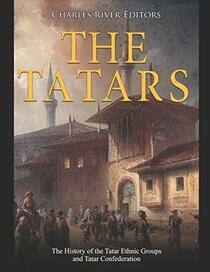Having recently read a book about Medieval Russia, I learned that the Tatars significantly influenced the lands from Bulgaria to China and beyond. I thought it would be helpful to understand more about the Golden Horde. The most amazing thing I learned was about Genghis Kan's life; he lived an incredibly difficult life. The book points out that most great warriors could rely on their history to help them. Julius Caesar had powerful and well-trained Roman soldiers to back him up. Genghis had nothing. He created a fierce warrior fighting force by the strength of his cunning, intelligent policies, and dogged determination.
This book broadened my understanding of the Khans; I thought Kublai Khan followed Genghis. He was the first Mongol emperor of China when he toppled the Song Dynasty.
This book explains that the Tatars made most of their money by plundering and enslaving people. After becoming Muslim, they raided Christian communities and gathered enslaved people for the Ottoman Empire and the Middle East. These slave harvesting raids continued from the late 15th to the mid-18th century.
The Crimea Tatars were safe with the support of the Ottoman Empire. In 1529, the Ottomans overreached their power by trying to take Vienna. Christian countries joined the fight to keep Islam from the Austrian capital. Later, Suleiman the Magnificent died, and the Ottoman Empire began to struggle.
The Crimea Tatars became vassals of Russia. Stalin deported almost 200,000 Tatars out of Crimea. It took generations to return, but it was too late; Russians had taken their homes and lands. Even today, the Tatars are struggling with their Russian overlords. They are a minority group in trouble.
This book broadened my understanding of the Khans; I thought Kublai Khan followed Genghis. He was the first Mongol emperor of China when he toppled the Song Dynasty.
This book explains that the Tatars made most of their money by plundering and enslaving people. After becoming Muslim, they raided Christian communities and gathered enslaved people for the Ottoman Empire and the Middle East. These slave harvesting raids continued from the late 15th to the mid-18th century.
The Crimea Tatars were safe with the support of the Ottoman Empire. In 1529, the Ottomans overreached their power by trying to take Vienna. Christian countries joined the fight to keep Islam from the Austrian capital. Later, Suleiman the Magnificent died, and the Ottoman Empire began to struggle.
The Crimea Tatars became vassals of Russia. Stalin deported almost 200,000 Tatars out of Crimea. It took generations to return, but it was too late; Russians had taken their homes and lands. Even today, the Tatars are struggling with their Russian overlords. They are a minority group in trouble.




